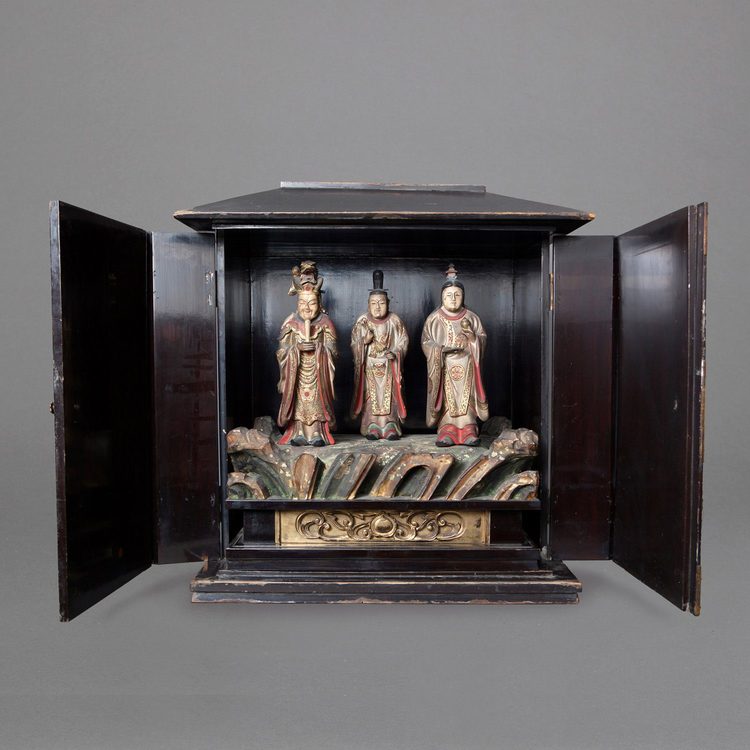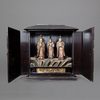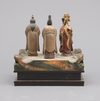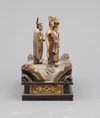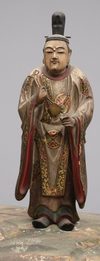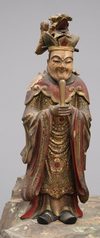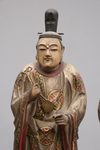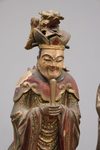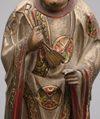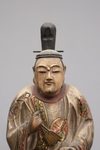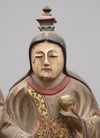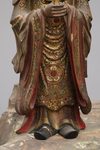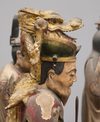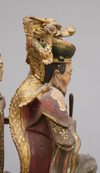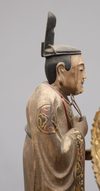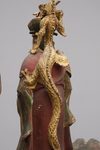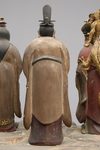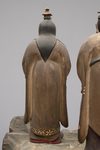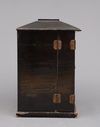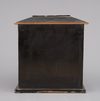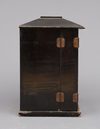Lot 55 EXCEPTIONAL ZUSHI-SHRINE WITH 3 DEITIES,EDO PERIOD (1615–1868)
A black lacquer wooden zushi 厨子 (portable shrine) housing a triad of polychrome wooden deities standing on rocks with gilt details. The deities from left to right are: Nanda’ryûô (Dragon King of Rejoice), a Shinto figure (myoshin) holding two arrows, and Uhô Dôji (Rain Treasure Boy).
Finely carved and detailed with gold highlights, the three Shinto deities stand on a rocky base supported by a (later) lacquer pedestal. The figures are dressed in voluminous robes decorated with polychrome floral patterns and scrolling vines. Hachi Dairyûô Nagaraja, the Dragon King, is at the center, distinguished by the coiling dragon resting atop his headgear. To his left stands Nanda’ryûô, and to his right, Uhô Dôji, each holding their symbolic attributes.
When Buddhism came to Japan there existed already an indigenous creed known as Shintoism or the Way of the Gods. During the Heian Period both creeds started to absorb each other, a process that is known as honcho suija: buddha and bodhisattva could manifest themselves as the original gods of Japan (kongen).
This shrine reflects the syncretism of Buddhism and Shintoism, a process known as honchô suijaku, where Buddhist deities were believed to manifest as native Japanese gods (kongen). The figures, carved in a provincial style, likely come from a local shrine where villagers prayed for rain for their crops.
Period: Japan – Edo period (1615-1868).
Size:
Statues: Height approx. 28 cm.
Zushi: Height 61 cm, Width 37.8 cm, Depth 55 cm.
Very good condition with typical wear, small losses to lacquer, light flaking, and some small repairs to the figures and base. The black-lacquer pedestal is a later addition. Please refer to the photos for a clear condition reference.
